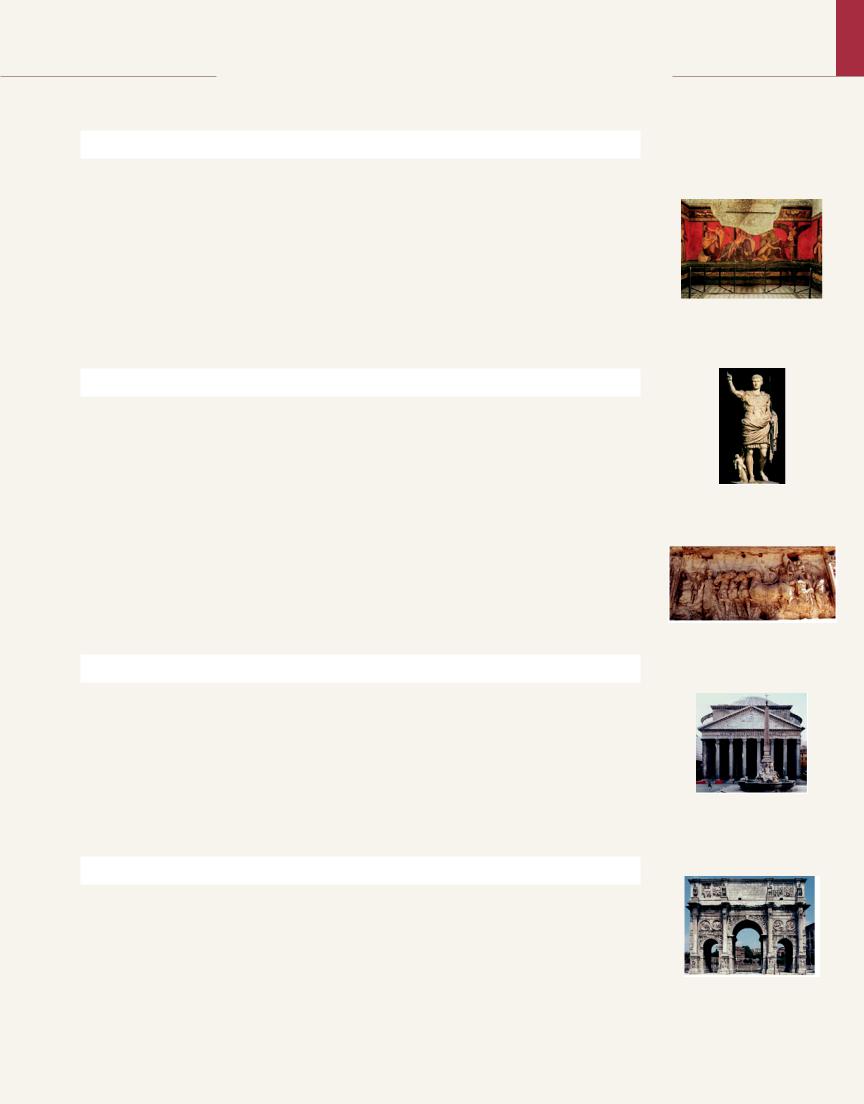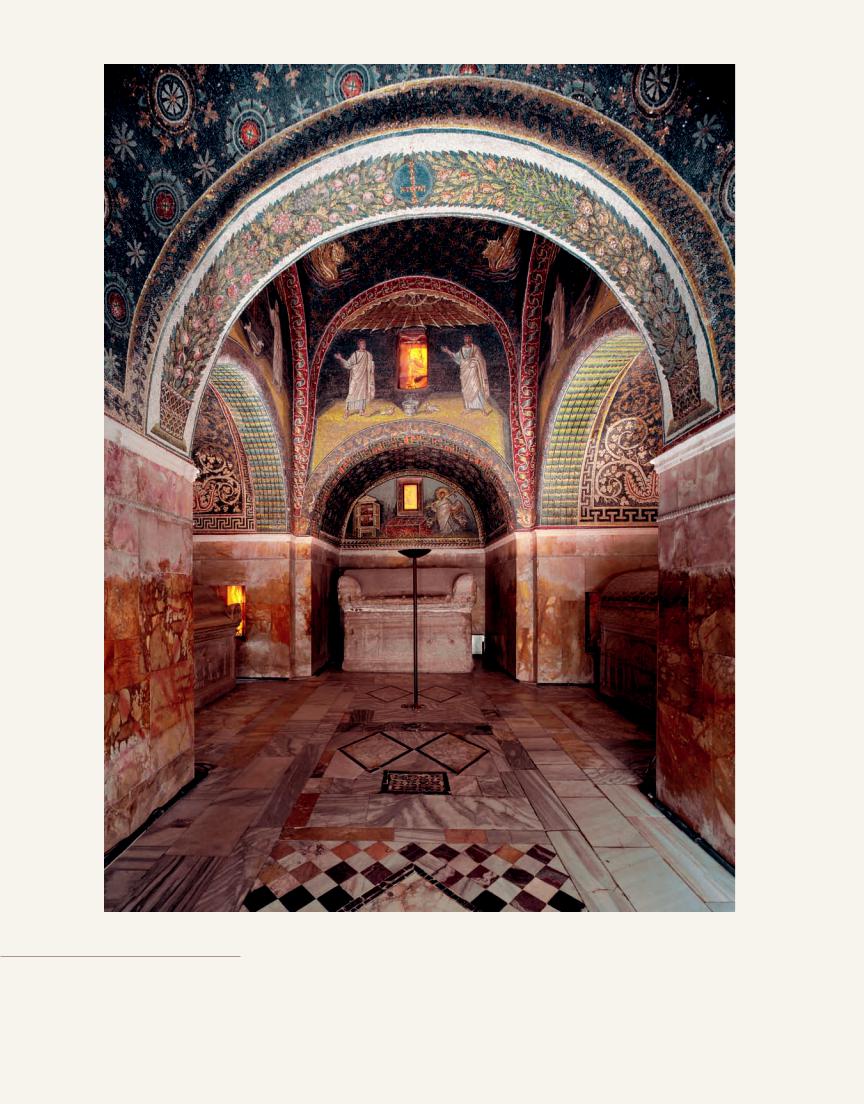
C7
.pdf
T H E B I G P I C T U R E
T H E R O M A N E M P I R E
MONARCHY AND REPUBLIC, 753–27 BCE
According to legend, Romulus and Remus founded Rome in 753 BCE. In the sixth century, Etruscan kings ruled the city and Roman art was Etruscan in character.
In the centuries following the establishment of the Republic (509–27 BCE), Rome conquered its neighbors in Italy and then moved into Greece, bringing exposure to Greek art and architecture.
Republican temples combined Etruscan plans with the Greek orders, and houses had peristyles with Greek columns. The Romans, however, pioneered the use of concrete as a building material.
The First Style of mural painting derived from Greece, but the illusionism of the Second Style is distinctly Roman.
Republican portraits were usually superrealistic likenesses of elderly patricians and celebrated traditional Roman values.
EARLY EMPIRE, 27 BCE–96 CE
Augustus (r. 27 BCE–14 CE) became the first Roman emperor after defeating Mark Antony and Cleopatra at Actium in 31 BCE.
Augustan art revived the Classical style with frequent references to Periclean Athens. Augustus’s ambitious building program made lavish use of marble, and his portraits always depicted him as an idealized youth.
Under the Julio-Claudians (r. 14–68 CE), the full potential of concrete began to be realized in buildings such as the Golden House of Nero.
The Flavian emperors (r. 69–96 CE) erected the Colosseum, Rome’s first and largest amphitheater, and arches and other monuments celebrating their victory in Judaea.
Pompeii and Herculaneum were buried in 79 CE during the eruption of Mount Vesuvius. During the last quarter century of the towns’ existence, the Third and Fourth Styles were used to decorate the walls of houses.
HIGH EMPIRE, 96–192 CE
Villa of the Mysteries, Pompeii,
ca. 60–50 BCE
Augustus as general, Primaporta, ca. 20 BCE
Arch of Titus, Rome
after 81 CE
The Roman Empire reached its greatest extent under Trajan (r. 98–117 CE). The emperor’s new forum and markets transformed the civic center of Rome. The Column of Trajan commemorated his two campaigns in Dacia in a spiral frieze with thousands of figures.
Hadrian (r. 117–138 CE), emulating Greek statesmen and philosophers, was the first emperor to wear a beard. He built the Pantheon, a triumph of concrete technology.
Under the Antonines (r. 138–192 CE), the dominance of Classical art began to erode, and imperial artists introduced new compositional schemes in relief sculpture and a psychological element in portraiture.
LATE EMPIRE, 193–337 CE
Pantheon, Rome,
118–125 CE
In the art of the Severans (r. 193–235 CE), the Late Antique style took root. Artists represented the emperor as a central frontal figure disengaged from the action around him.
During the chaotic era of the soldier emperors (r. 235–284 CE), artists revealed the anxiety and insecurity of the emperors in moving portraits.
Diocletian (r. 284–305 CE) reestablished order by sharing power. Statues of the tetrarchs portray the four emperors as identical and equal rulers, not as individuals.
Arch of Constantine, Rome,
312–315 CE
Constantine (r. 306–337 CE) restored one-man rule, ended persecution of the Christians, and transferred the capital of the Empire from Rome to Constantinople in 330. The abstract formality of Constantinian art paved the way for the iconic art of the Middle Ages.

8-1 Interior of the Mausoleum of Galla Placidia, Ravenna, Italy, ca. 425.
Before Late Antiquity, mosaics were usually confined to floors. In the so-called Mausoleum of Galla Placidia (FIG. 8-15), mosaics cover every square inch of the interior above the marble-faced walls.
